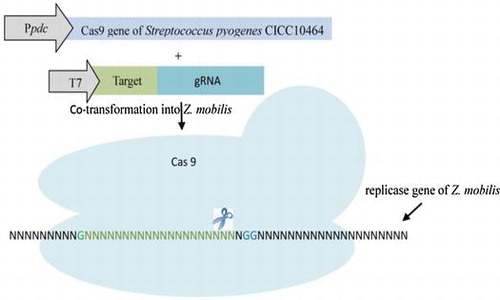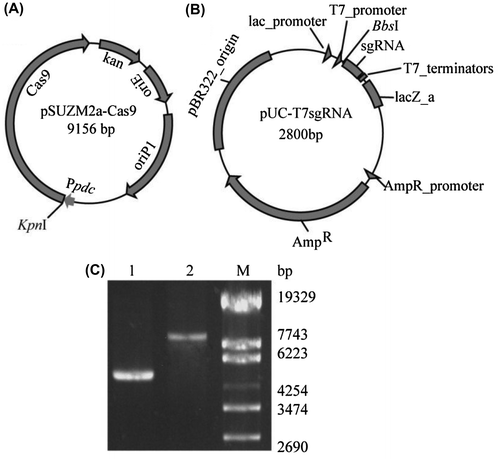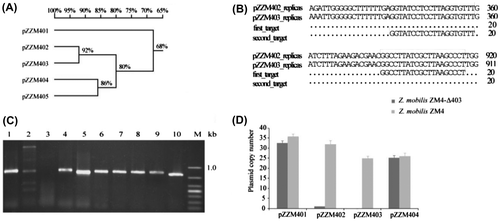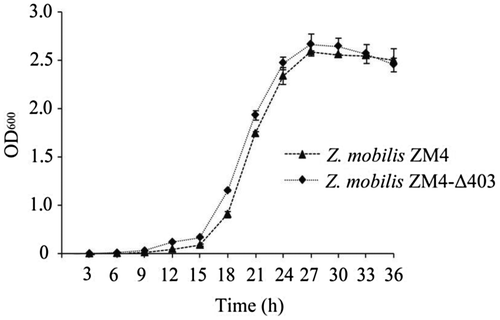Figures & data

Table 1. Primers used for construction of Cas9-expression plasmid and amplification of templates for in vitro transcription.
Table 2. Primers used for PCR assays to identify plasmids.
Fig. 1. Physical maps of pSUZM2a-Cas9 and pUC-T7sgRNA.

Fig. 2. Generation of region-specific deletions in the upp gene using the CRISPR/Cas9 system.

Fig. 3. Plasmid-specific PCR and quantitative PCR analysis of ZM4-∆403 and ZM4.


